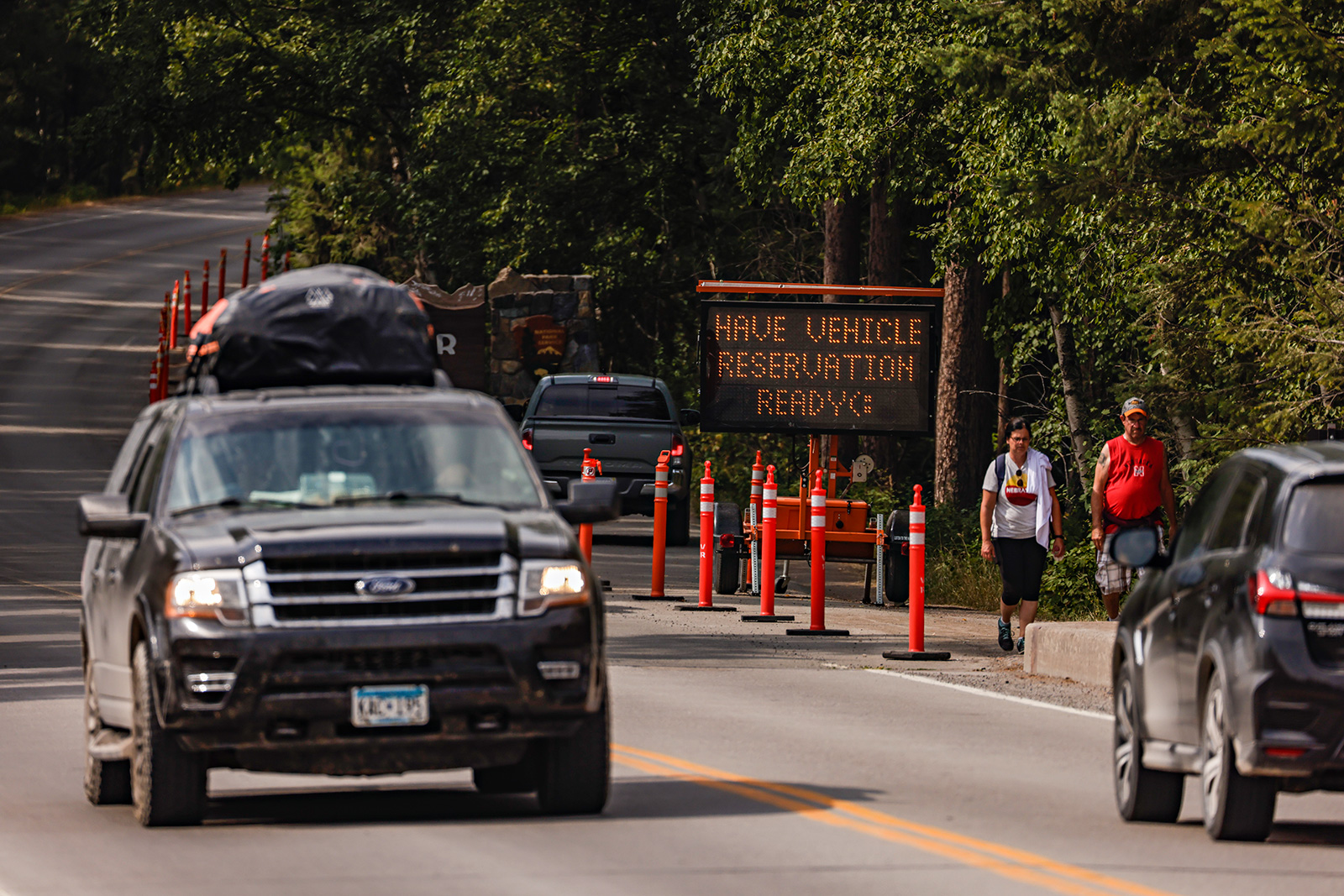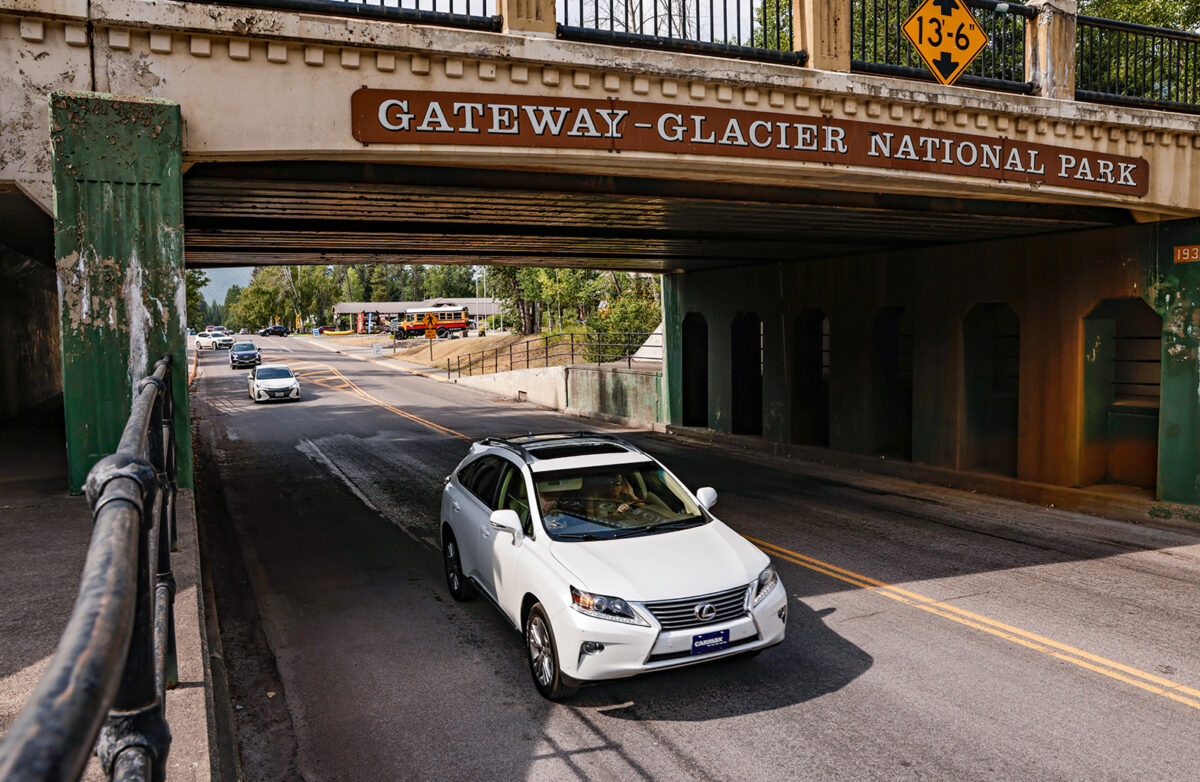Glacier Park’s Year-to-Date Visitation Stats Reveal Summertime Uptick
More than 2.8 million visitors flocked to Glacier National Park through September, marking a 1.2% increase compared to last year and matching visitation during the National Park Service’s 2016 Centennial
By Tristan Scott
New year-to-date visitation data through September reveals an uptick in summertime traffic to Glacier National Park compared to last year. Park officials reported a 1.2% increase in overall visitation during the first nine months of 2023, which includes the busy summer season that saw implementation of the most comprehensive vehicle-reservation system in the park’s history.
Despite the reservation requirement, which expired on Sept. 10 and has existed during the summer months in some form or another since 2021, more than 2.8 million people visited Glacier Park through September, a figure that is nearly identical to 2016, when the National Park Service observed and promoted its centennial celebrations.
According to the park’s visitation statistics, approximately 552,658 visitors came to Glacier in September 2023, or about 1.34% more than the same month last year.
Other summer months, when visitors flock to Glacier Park to drive the alpine stretches of the Going-to-the-Sun Road, tallied similar upticks, with the exception of August. In June, 539,250 visitors, or 1.43% more than the same month last year; in July, 737,540 visitors arrived in Glacier, or 0.39% more than the same month last year; and in August, 654,993 people visited Glacier, or 3.44% fewer than the year prior.
Gina Icenoggle, Glacier Park’s public information officer, said on Friday that the reservation system was engineered to more evenly distribute visitors across the park’s 1-million-acre footprint so as to avoid the kind of congestion that had become commonplace at certain points of the day.
“The purpose of the vehicle reservation system has always been to smooth out visitation, not to reduce visitation,” Icenoggle said. “And I think our numbers show that we are doing just that. The reservation system is a way to distribute visitors to avoid congestion and improve their park experience. But overall visitation is more or less independent of how we manage the peak hours of the day.”
Over the past two decades, annual visitation at Glacier National Park has increased from approximately 1.5 million to over 3 million visitors, most of them concentrated along the Going-to-the-Sun Road corridor and other front-country destinations during the peak season of June through September, creating severe congestion at the park’s most popular entrances.
When the park first introduced its vehicle reservation system in 2021, it was only in place at the West Glacier and St. Mary entrances, where the reservation period started at 6 a.m. and extended until 5 p.m. That created a pinched-balloon effect, whereby park visitors caught unaware by the new vehicle-reservation policy would migrate to one of several unrestricted entrances, some of them hours away. Even so, by mid-morning the entrances would be overwhelmed and forced to close for the day.
Park officials learned from those shortcomings and adjusted the system to include the North Fork in 2022, while also narrowing the hours during which reservations were required, from 6 a.m. – 4 p.m. That allowed visitors without a reservation to take a sunset drive along the Sun Road or enjoy an evening hike. This year, the reservation requirements were expanded to include Many Glacier and Two Medicine, but the hours were pared back to 3 p.m., easing any sign of gridlock on most days except during that brief period just after the requirement is lifted.
“We think we might be dialing in the sweet spot right now,” Glacier Park Superintendent Dave Roemer told the Beacon in August, when administrators hosted a trio of civic-engagement sessions to gather public feedback and input to inform a strategy for summer 2024.

Still, not everyone wants to see Glacier’s managed access system continue in its fourth iteration. The reservation requirement has rankled locals who miss a bygone era when an impromptu park visit wasn’t such a logistical ordeal, and U.S. Rep. Ryan Zinke, the Republican from Whitefish who served as Interior Secretary during the Trump administration, has been hammering on the system since this spring. Zinke, who oversaw the National Park Service (NPS) before resigning amid a cloud of ethics investigations, even introduced legislation to defund and block the vehicle reservation system. In July, the House Appropriations Committee approved the proposal, adding an amendment to the FY24 Interior, Environment and Related Agencies Appropriations Act, which on Nov. 3 passed the House by a vote of 213-203.
According to a Friday press release from Zinke’s office, one of his “Montana priorities” included in the bill “blocks Glacier National Park from using funds to implement a vehicle rationing system and prioritizes the adoption of a functional shuttle system for visitors.”
While Icenoggle said park officials are still reviewing visitor-use data and public comments to refine a managed-access strategy for 2024, the objective has never been to shut out visitors, but rather to enhance the quality of their experience while protecting a public resource.
“Our visitation numbers are still pretty much topping out at 3 million people every year,” Icenoggle said. “We’re on target to hit 3 million again this year, so overall visitation isn’t necessarily affected by the vehicle reservation system. It’s those visitation spikes that we’re trying to more evenly distribute.”
“It’s like when you have a piece of toast and you can either put all the jam in the middle or spread it out to the edges,” Icenoggle continued. “I enjoy my toast more when it’s spread out to the edges and that is what we are doing with visitation so that it’s not all jammed up in one place at one time.”